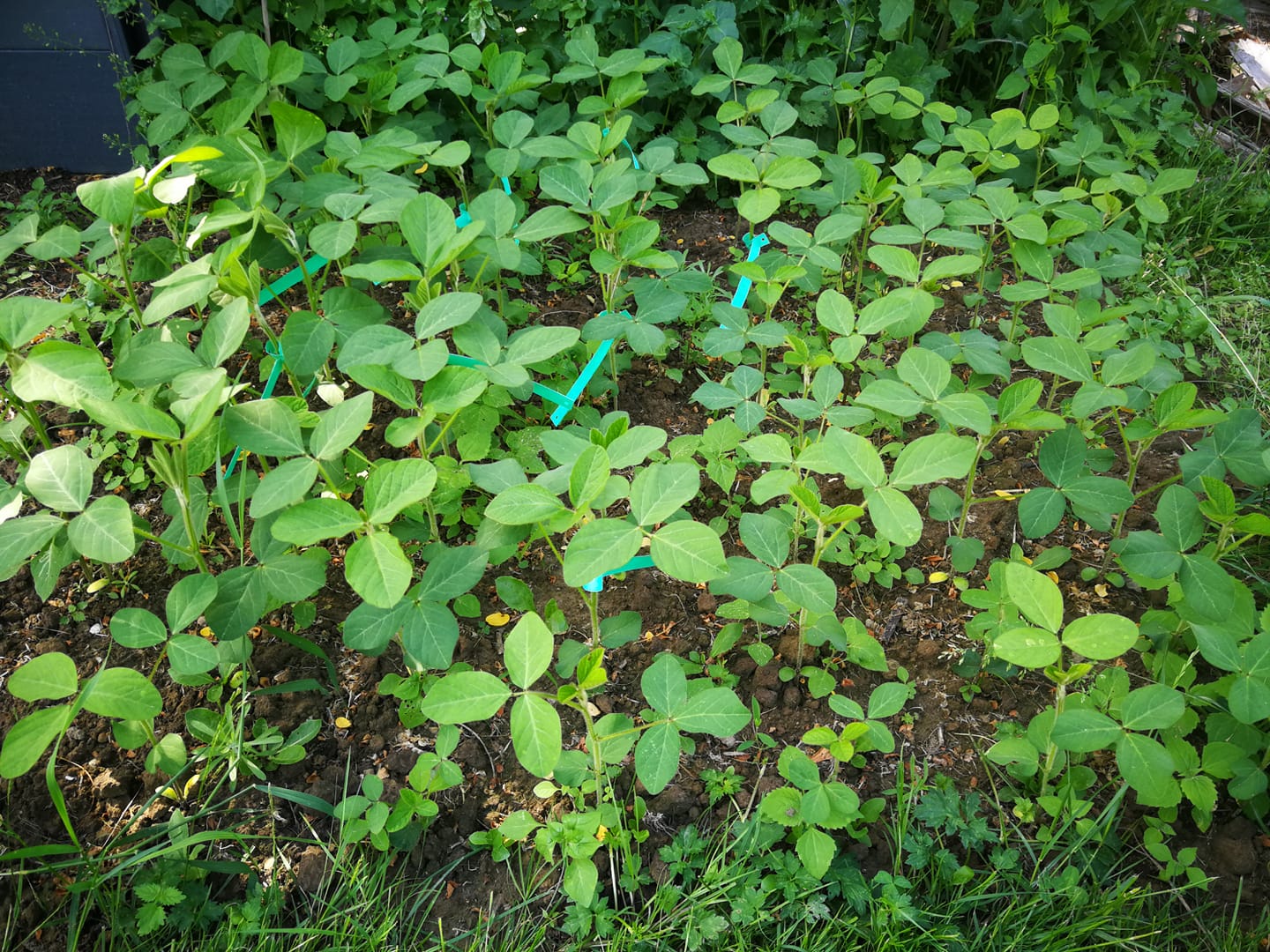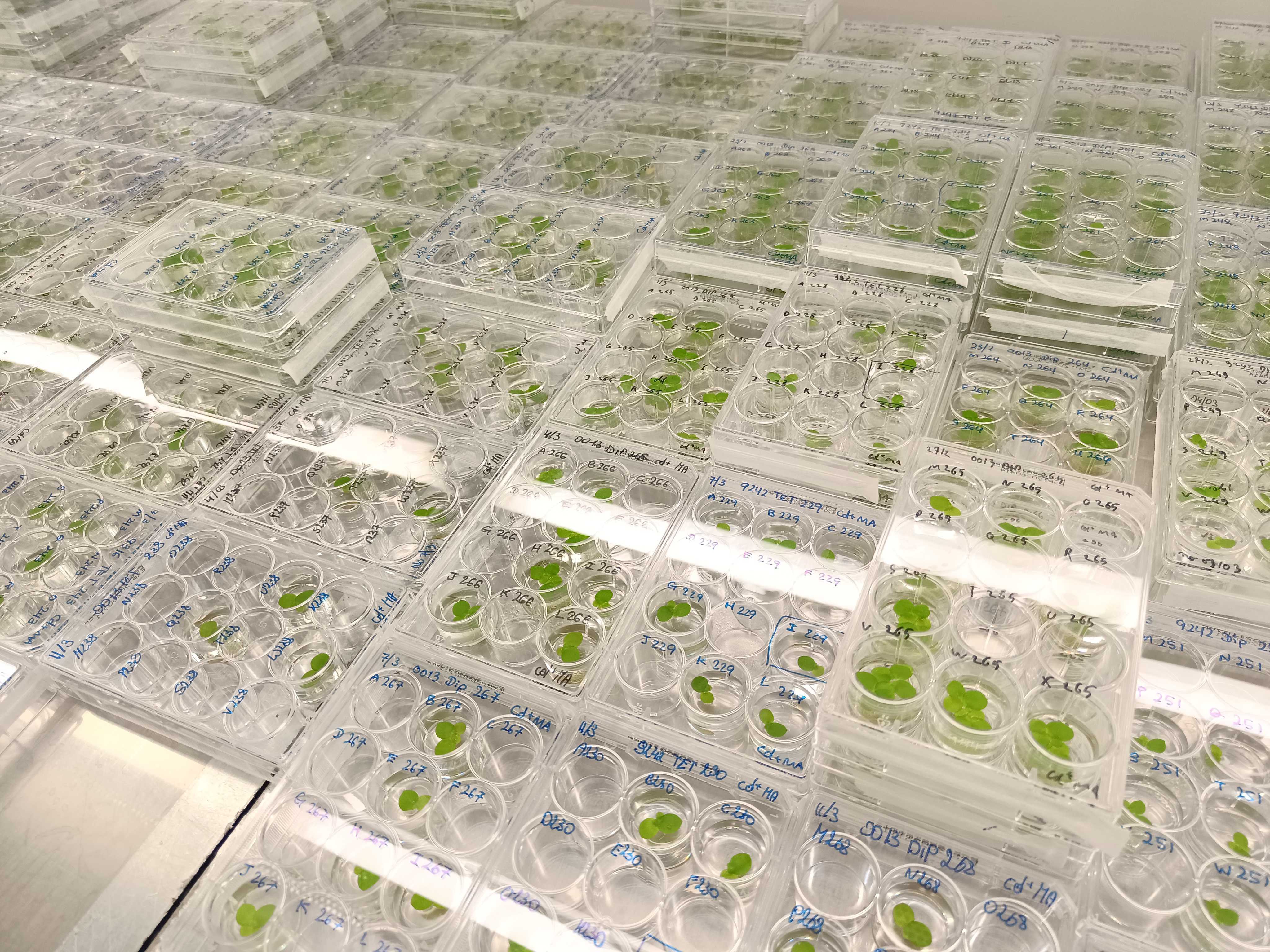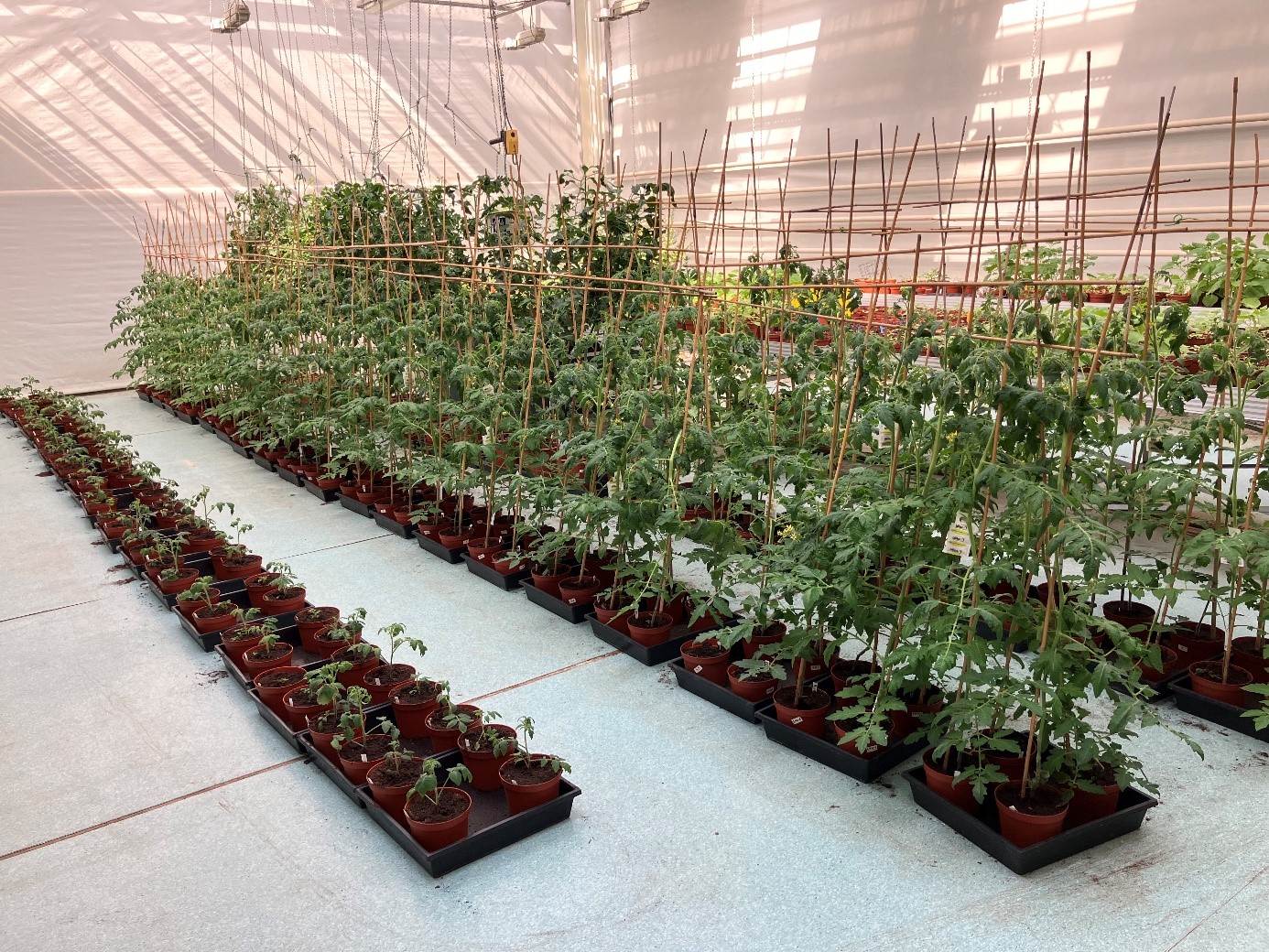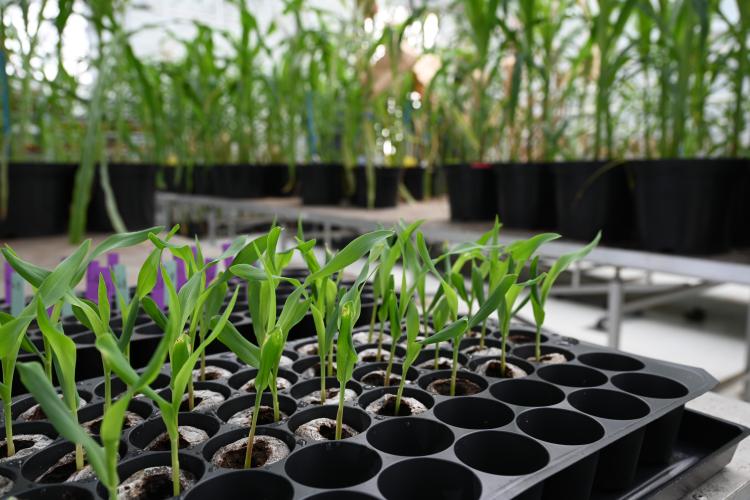Introduction
Our ambition is to accelerate the innovation cycle between lab and field. Furthermore, we will strengthen activities to understand how molecular pathways behave in field conditions in order to bring this information back to the lab. Closing the lab-to-field-to-lab learning cycle is pivotal in translating basic research findings to field applications. PSB has also developed unique ways to translate basic scientific insights into field applications. Maize and poplar have since long been used in PSB to validate novel biological insight even up to the level of field trials, meanwhile, PSB also initiated research on tomato, wheat and soybean. This latter crop is one of the major biotech crops and there is rapidly growing interest to develop locally adapted soybean as a major European protein crop.
Arabidopsis thaliana

For much of the fundamental research ongoing at PSB, Arabidopsis thaliana is still the organisms of choice. A. thaliana, a small flowering plant, stands as a cornerstone in plant research due to several key attributes. Its relatively short life cycle of about 6 weeks allows for rapid experimentation and observation, facilitating the study of plant development, genetics, and physiology. Its small genome, fully sequenced, enables researchers to easily manipulate and analyze its genetic makeup, uncovering fundamental insights into plant biology. Additionally, Arabidopsis exhibits genetic and biochemical similarities to many crop plants, providing valuable insights into agricultural applications. Furthermore, its amenability to genetic transformation and the availability of extensive genetic resources make it an invaluable tool for investigating gene function and regulatory mechanisms. Overall, Arabidopsis thaliana’s combination of characteristics continue to make it an exceptional model system for unraveling the complexities of plant biology and advancing agricultural practices.
Poplar
Poplar (genus Populus) serves as an important model system in plant biology due to its fast growth, ease of genetic modification, and significant ecological and economic value. As a deciduous tree commonly found in temperate regions, research in poplar provides insights into various biological processes such as wood formation, seasonal growth patterns, and responses to environmental stress.
One of the key advantages of using poplar as a model system is its relatively small genome size compared to other tree species, facilitating genomic studies. The complete sequencing of the genomes of several poplar species has allowed researchers to explore gene function and regulatory networks. The large genetic diversity within the poplar germplasm allows for comprehensive Genome Wide Association studies. Poplar's amenability to genetic transformation enables reverse genetics studies and the development of transgenic lines for specific traits that can be further studied outdoors in experimental field trials.
Research on poplar can inform breeding programs aimed at improving growth rates, disease resistance, and adaptability to various climates, contributing to both fundamental plant science and practical applications in forestry and bioenergy sectors.
Soybean

Many legumes produce protein-rich beans, offering a sustainable, plant-based protein source for human consumption. Additionally, they possess the remarkable ability to obtain essential nutrients, specifically nitrogen (N) and phosphorus (P), through symbiotic relationships with nitrogen-fixing rhizobia and arbuscular mycorrhizal fungi, respectively.
At PSB, research has extensively utilized Medicago truncatula and Pisum sativum. Recently, our research focus has expanded to include soybeans (Glycine max), a globally significant protein source for both food and animal feed.
The increasing necessity for sustainable agricultural practices and the growing global demand for plant-based proteins, along with the need to reduce reliance on imports from regions vulnerable to deforestation, is driving the expansion of soybean cultivation into higher latitudes in Europe.
At PSB, primary research themes include understanding how soybeans cope with changing environmental conditions, such as temperature, and how symbiotic interactions contribute to the production of protein-rich beans when cultivated in our regions. This research is critical for enhancing sustainable agriculture and meeting the nutritional needs of a growing population.
Spirodela polyrhiza

More and more, the duckweed Spirodela polyrhiza is being developed as a model system at PSB. Long-term evolutionary experiments are run with Spirodela, because of several traits that make it a superior model system to study in particular polyploidy and genome duplication among plant systems. Individuals (called fronds) reproduce asexually at a fast rate (generation time: 2-3 days), are easily maintained in laboratory conditions in a space-efficient way, and have a relatively small (approx. 150 Mb), well-annotated genome. Neotetraploids were already developed from diploid strains in Yves Van de Peer's lab by colchicine treatments and showed immediate phenotypic differences with its progenitor diploids. In this system, newly formed tetraploid populations can directly be compared with their progenitor diploid population, avoiding effects of recombination which plague other systems.
Tomato

Tomato (Solanum lycopersicum) is an important crop and an important source of nutrition in the human diet, but it is also a heavily-researched model system. Much of what we know about plants came from studies with the plant Arabidopsis thaliana because of its small size, fast life cycle, sequenced genome and vast functional genomics resources. Nonetheless, Arabidopsis lacks many traits of great economic importance. As such tomato became the model for the study of development and ripening of fleshy (climacteric) fruits, but also of formation of compound leaves and multicellular glandular trichomes and agronomically relevant plant-insect, symbiont, and pathogen interactions. These studies revealed many novel roles of plant hormones and insights in their functioning, for instance in the regulation of growth, development, ripening, metabolism and stress responses of fruit and other tomato organs. Accordingly, tomato functional genomics resources are booming.
At PSB, primary research themes for tomato include understanding how tomato plants cope with changing environmental conditions, such as biotic stresses imposed by herbivores and microbial pathogens. A particular focus goes to the unravelling of stress hormone signaling pathways and the regulation of (specialized) metabolism. To this end, PSB has installed transformation platforms (whole plant and hairy root), as well as cutting-edge analytical platforms for single-cell and spatial transcriptomics, and protein-protein and protein-metabolite interactomics. This research is critical for preparing agriculture for the challenges of a changing climate.
